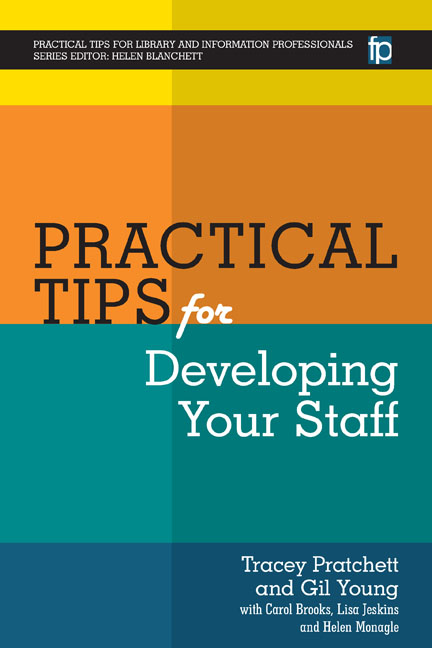Book contents
- Frontmatter
- Contents
- List of figures and tables
- Acknowledgements
- The authors
- List of abbreviations
- Series Editor's introduction
- Introduction
- Section 1 Theories
- Section 2 Infrastructure
- 11 Why develop staff?
- 12 Workforce planning
- 13 Job descriptions
- 14 Person specifications
- 15 Advertisements
- 16 Shortlisting
- 17 Interviews
- 18 Interviews – presentations and tests
- 19 Interviews – feedback
- 20 Inductions
- 21 Managing performance
- 22 Team development plans
- 23 Appraisals – preparing
- 24 Appraisals – conducting
- 25 Setting objectives
- 26 One-to-ones
- 27 Feedback – general
- 28 Team building
- 29 Team meetings
- 30 Sharing learning with the team
- 31 Writing references
- 32 Exit interviews
- 33 Effective handover
- Section 3 Activities and tools
- Index
33 - Effective handover
from Section 2 - Infrastructure
Published online by Cambridge University Press: 09 June 2018
- Frontmatter
- Contents
- List of figures and tables
- Acknowledgements
- The authors
- List of abbreviations
- Series Editor's introduction
- Introduction
- Section 1 Theories
- Section 2 Infrastructure
- 11 Why develop staff?
- 12 Workforce planning
- 13 Job descriptions
- 14 Person specifications
- 15 Advertisements
- 16 Shortlisting
- 17 Interviews
- 18 Interviews – presentations and tests
- 19 Interviews – feedback
- 20 Inductions
- 21 Managing performance
- 22 Team development plans
- 23 Appraisals – preparing
- 24 Appraisals – conducting
- 25 Setting objectives
- 26 One-to-ones
- 27 Feedback – general
- 28 Team building
- 29 Team meetings
- 30 Sharing learning with the team
- 31 Writing references
- 32 Exit interviews
- 33 Effective handover
- Section 3 Activities and tools
- Index
Summary
WHEN AN EMPLOYEE leaves your service a good handover is an essential part of the process. By applying an effective handover process you can ensure that the outgoing employee does not leave with crucial knowledge which is critical to the continued smooth running of your service (Agarwal and Islam, 2015). In an ideal scenario, when an employee has handed in their notice a replacement will commence employment as soon as possible.
Ideally the new employee should have the opportunity to ‘shadow’ the outgoing employee for a week or so to learn the ropes. This takes the pressure off the new employee and can help them to settle in. It will also mean that they will understand the requirements of the role and become a more productive part of the team more quickly.
Unfortunately, lengthy recruitment processes and delays can often mean that the outgoing employee has left your service weeks or even months before a replacement is appointed. However, as a manager or supervisor there are still a number of things that you can do to ensure that an effective handover process can still take place when the new employee begins. Arranging for someone within the existing team to shadow the outgoing employee before they leave and be trained in crucial elements of the role is the second-best thing to having the outgoing employee train their replacement. You may need to redistribute other work within the team to ensure that the person picking up extra work does not become overloaded, but you will have someone who can fill the role of the outgoing employee and keep important elements of the service running.
Finally, a good collection of written documentation about the post and its duties should be produced by the outgoing employee and saved in a shared drive or digital repository. Often job roles change over time, and when an employee leaves this is a good opportunity to review the requirements of the post. Involve the outgoing employee in writing the job description for their replacement, to ensure that it accurately represents the role that they are leaving.
- Type
- Chapter
- Information
- Practical Tips for Developing Your Staff , pp. 77 - 80Publisher: FacetPrint publication year: 2016



